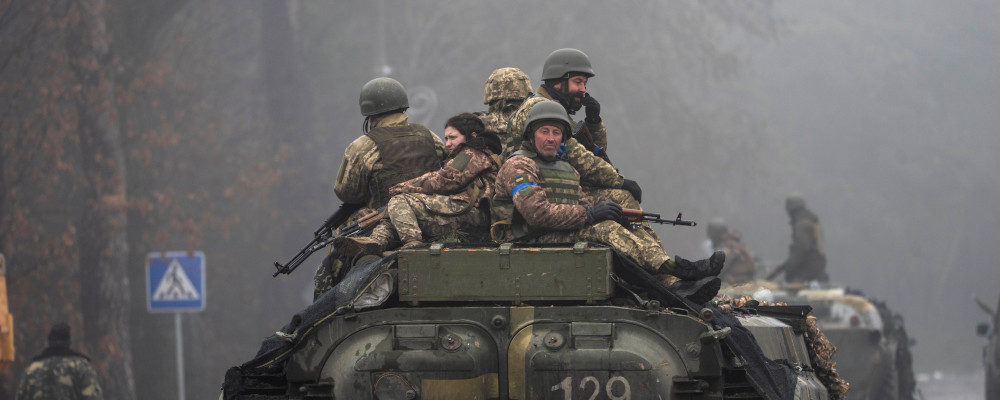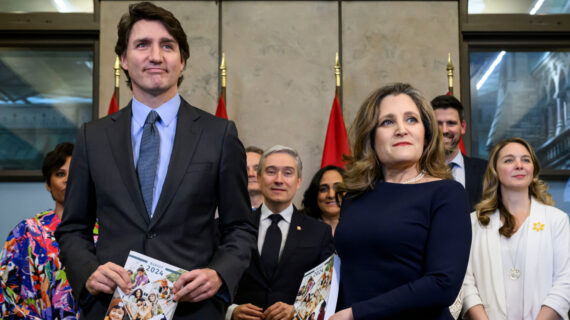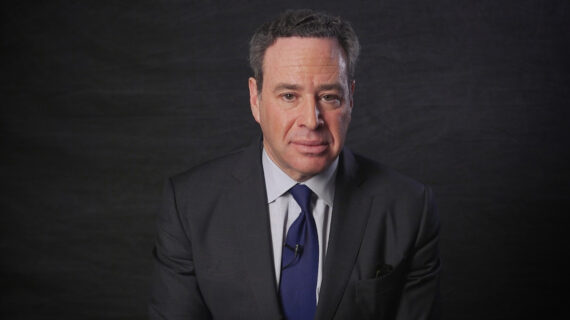Right now in Europe a legendary war is being fought between a “David and a Goliath” in Ukraine and Russia. David, against many expectations, is doing surprisingly well on the battlefield. Goliath? Not so well. In war, you succeed and win when you obtain your strategic objectives or your war aims. In this case, Russia’s war aim or key strategic objective was to take over the entirety of Ukraine and replace its government with one more friendly, a puppet if you will. Ukraine’s objective in this war has been to hang on, and if possible retake its lost territories in the Donbas and the Crimea. Neither side seems close to achieving their war aims or winning this war in real strategic terms at this point.
We have watched Russia’s military strategy shift several times during this war. In the first phase of the war, Moscow moved quickly to seize Kyiv and replace the Zelensky government with one of its own. In the second phase of the war, we saw a battle of attrition around Kyiv and Kharkiv. In the third phase of the war, Russian forces were defeated in the north above Kyiv and to the northeast, with Russian forces falling back into Belarus and Russia with heavy losses. Now we have entered the fourth stage of the war, which is the battle to secure the Donbas and to take the southern coast to Moldova, and maybe even Moldova itself.
Russian forces are starting to fight according to their own doctrine of using heavy artillery barrages and airstrikes to support ground operations but continue to struggle with low morale. To date, eight weeks in, Russia does not have air superiority. As well, the United Kingdom reports that Russia has been forced to merge and redeploy depleted and disparate units from failed advances in northeast Ukraine.1Depleted Russian units that failed to take Kyiv are merging, says MoD Russia is using penny packets of tactical battalion groups and regiments to attack objectives instead of using overwhelming force. There is a reluctance to employ airpower in support of ground power. There are clear gaps in logistics, sequencing, and planning, although it is improving. Russian commanders, in their drive to the cities, have seen their field hospitals left far behind the front.
One of the great lessons learned coming out of this war will be how well Ukraine controlled the information flow in the age of social media. We know everything that Ukrainians want us to know, but we know less about the cost of the fighting for Ukrainian men, women, and materiel. But thanks to a dominant Ukrainian and NATO narrative, we know almost everything about Russian losses in this conflict. Russia has seen 15,000 dead according to the British Ministry of Defence.2Russia so far lost 15,000 troops in Ukraine: UK defense secretary There are at least three times that number of wounded. This means that of Russia’s invading force of 190,000 to 200,000 men, somewhere in the neighbourhood of 60,000 are now rendered ineffective.
A specialized blog, Oryx, counts Russian losses and documents them with either photographic or video evidence;3Destination Disaster: Russia’s Failure At Hostomel Airpor evidence that strongly suggests that Russia has lost at least 500 main battle tanks and more than 300 armoured fighting vehicles. In a force of more than 120 Battalion Tactical Groups (BTGs) Russia has probably lost somewhere in the neighbourhood of at least 30 BTGs. Russia has drawn on reservists, its proxy Militia in Ukraine, and mercenaries from Chechnya, Syria, and Libya to replace its losses. In real terms, Russia has enough force for one last offensive in the Donbas before it either re-entrenches, pushes back from the table, or mobilizes for war. Russia has not mobilized its entire force for war yet, but if it’s looking for a victory it may have to do so.
Ukrainian losses have been harder to determine as we enter almost two months of the war. We don’t know the real cost to Ukraine in military terms, in civilian lives, infrastructure (which is by all accounts destroyed in the country in the east and in the south), treasury, lost talent, and cultural, artistic, and historic items that are intrinsic to Ukrainian culture and can never be replaced. Some estimates suggest that even with frozen Russian assets it will be two or three years before Ukraine can rebuild much of the country that is now a wasteland. But some things are lost forever. Reportedly, Russian war crimes continue to be as savage as those we saw during the Second World War on the eastern front.4Ukraine initiates more than 9,000 cases over Russia’s military crimes Russia’s war on Ukraine is a genocide—clearly an attempt to wipe out a people, a culture, and a history.
The United States and NATO were at first slow to respond to Russian aggression, issuing threats of sanctions while at the same time clearly signalling to Russia that they would contribute no boots on the ground and would not impose a no-fly zone. In short, the West offered Ukraine every support short of help and assistance. When the Russian invasion came, NATO countries ramped up both military aid and punishing sanctions targeting the Putin regime, Russia’s security apparatus, and its economy.
Now NATO and Western countries are coming to the conclusion that we either stop Russia in Ukraine using weapons we have in our war stocks or we fight Russia later in our own countries. NATO and other like-states are providing training, repair of equipment, provision of small arms, and even now heavy armour and combat aircraft. These moves have reportedly given Ukraine tank parity with Russia. Additionally, NATO has sent anti-tank, anti-air, and anti-ship missiles to Ukraine which the Ukrainian military has used to great effect. Two months into this bloody war, Russia still does not control the sky over Ukraine.
The end result on the battlefield is that the Russians maintain enough forces to the north in Belarus and Russia to hold Ukrainian forces in and around Kyiv in place. This denies Ukraine from redeploying forces to aid in the defence of the east and south of the country. According to senior U.S. defence officials, Russia continues to bolster its forces in eastern Ukraine, bringing the total number of its Battalion Tactical Groups (BTGs) to 85. The Russians continue to isolate and blockade Kharkiv. At the same time, the Kremlin is making a massive effort to take the Donbas in a series of north and south pincer movements and to secure the Ukrainian coast up to and including Odesa and Transnistria.
Now, the war in the Donbas is moving in slow motion and whether that pace will pick up will depend on a number of factors including the weather over the next 10 days. The upcoming warm weather will see favourable conditions for Russian offensive operations. As the ground dries up and the mud starts to come to an end, we’ll see the Russian army have the ability to go off-road and move to mobile warfare. We will also see the advantage likely shift for a time to Russia with its force concentrations in the east and south free for maneuver warfare while Ukrainian forces have to guard the entire country stretched to the limit and stretched too thin.
Having said that, for successful offensive operations Russia would have to have a three- or five-to-one advantage over the defending Ukrainians. At best they have two-to-one. If the Russian military is not careful their phase four offensive in the Donbas may bleed their existing infantry and armoured forces white. For Russia to even come close to saving face it has to at least seize the Donbas, the coast to Moldova, and maybe Moldova itself. The pressure is on, with the almost-holy day of Victory celebrations in Moscow—taking place on the anniversary of the end of the Second World War in Europe May 9th—a week away.
What does all this mean for the future of the Russo-Ukrainian War? For Russia, victory on the battlefield and in the war itself remains a gamble and is not certain by any stretch. Russia needs a rare quality in war, and one that it has lacked to date: luck. Does Russian President Vladimir Putin get lucky and have his hit teams kill Zelensky and his inner circle so that the Ukrainian government collapses? Does Russia get a battlefield breakthrough and make it to Odesa? Will the Belarusian army cross the frontier and take a distracted Kyiv from the north? Will Vladimir Putin announce a declaration of war with Ukraine on May 9th, Victory Day, and declare mobilization of the country’s reserve army for war? Can Russia take Moldova by surprise through hybrid and/or conventional war and feed the Russian domestic audience some fresh meat for May 9th? Maybe Western resolve collapses and sells out Ukraine at the bargaining table to Russia.
Taking Ukrainian territory and holding it are two different things.
Then there are the worst-case nightmare scenarios: does Russia target and destroy the massive dams on the Dnieper River, flooding large areas of the country with devastating effects? Will Putin resort to increased use of chemical weapons in order to break through on the battlefield or terrorize the civilian population into surrender? Does a desperate Russia use captured Ukrainian nuclear facilities as improvised radiological devices? Could a very desperate Putin use tactical nuclear weapons? None of these can be discounted if Putin’s regime is at stake.
For Ukraine, it is a matter of protecting its legitimate government and holding as much of its sovereign territory as it can by wearing down and even defanging the Russian war machine. Ukraine’s conduct of this war from the grand strategic level to the small unit actions of Mariupol are going to be studied in Western military academies and beyond for a long time to come. Ukraine has become NATO’s proxy war with Russia, and as long as it continues to get lethal aid from the West and training it is still in the game. The chance of Kyiv getting back territory in the east or south of the country in battle or peace treaty with Russia is low. Over the long haul, the chance that Ukraine retakes it after a bloody insurgency against a sanction-strapped Russia unable to reconstitute its army is medium to high. Taking Ukrainian territory and holding it are two different things.
For NATO, it has entered its first real proxy war with Russia since Afghanistan in 1979. It is hoping for a replay of that war with Russia emerging with a greatly diminished military machine. Russia’s long-standing strategic goal of splitting the U.S. and NATO from one another or pulling apart the EU has ended in failure, likely for the long haul. While some alliance members went weak, others have stepped up to the plate and an increase in overall NATO defense spending and combat readiness in the short-term is a certainty. NATO states know that they have to rebuild their combat power before Russia rebuilds theirs and before China becomes too big to stop.
Lastly, a bellicose China has gone quiet and shown a cold shoulder to its failed strategic partner Russia. The Chinese Communist Party’s recent dreams of carving up a sphere of influence from New Delhi to the Philippines, Taiwan, the Senkakus, and the Solomon Islands are no longer assured. China has been shocked by the power of the Western sanctions and others against Russia. Beijing has been taken aback by previously neutral counties like Sweden, Finland, and Switzerland choosing sides against Russia. Chinese President Xi is reportedly astounded by the triumph of Western military power over Russian military power and the superiority of Western arms over those of Russia’s—and China’s by extension. China can no longer ignore the power of a Taiwan with a “hedgehog” defense bristling with anti-air, anti-ship, and anti-tank missiles or automatically count on the success of a Chinese invasion fleet. The fact that Ukraine, using old weapons, has destroyed eight Russian warships (including the Black Sea flagship the cruiser Moskva), a frigate, and a large amphibious warfare ship, in a ground war, without a navy, has not gone unnoticed in Beijing.




